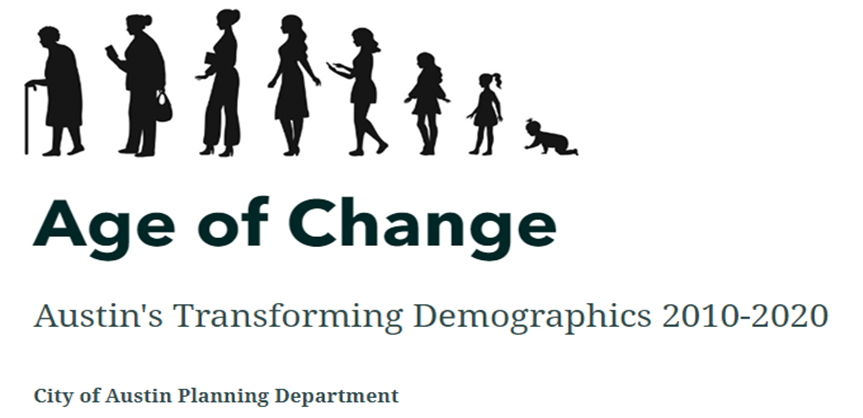
City of Austin
FOR IMMEDIATE RELEASERelease Date:
Contact: Communications and Public Information Office Email

The Demography Division in the City of Austin’s Planning Department is releasing a new Demographic Story Map focusing on age trends.
The Austin metro area is one of the fastest growing regions in the country, and the city of Austin is a major driver of that growth. The 2020 Census data shows that Austin’s growth has been substantial with only three U.S. cities (New York, NY, Houston, TX, and Fort Worth, TX) adding more growth during this timeframe.
The Demography Division in the City of Austin’s Planning Department is releasing a new Demographic Story Map that analyzes the 2020 Census data with a focus on age trends and how these changes have varied for different communities within Austin.
Some of the key findings included in this report include:
- Austin’s population is relatively young but aging rapidly.
- Population growth overall and among children took place along the edges of the city, whereas the older population grew fastest in West Austin.
- People 65 and older are the fastest growing age group in Austin, made up mostly of White older population, but the Asian older population grew the fastest.
- East Austin has increasing shares of White older adults and decreasing shares of older Black and Hispanic people.
- Although the child population grew between 2010 and 2020, children now make up a smaller share of the total population.
- Growth in the child population was driven mostly by Asian children, in contrast with a decline among Black and Latino children.
- The age distribution in Austin is heavily weighted by people of working age, especially those in their 20s and 30s.
- We have a strong ratio of workers to children and older adults, giving Austin a strong economic stance.
The demographic story map offers quick facts, interactive map and dashboards, and analysis on the city's greatest asset- its people.
This report is part of a series that will also include trends in housing, and families and households. In the next chapter of this report, we will describe changes in housing and the households built by individuals and families throughout the decade. The next report is expected to be out this Fall. You can find other demographic products and analysis from the City of Austin Demographics Division at austintexas.gov/demographics
